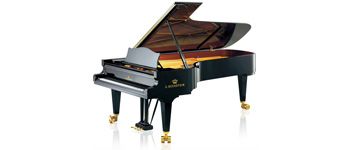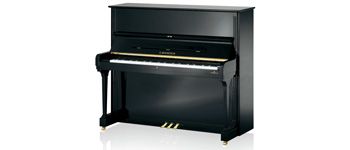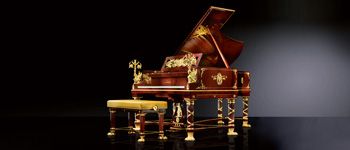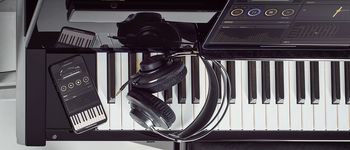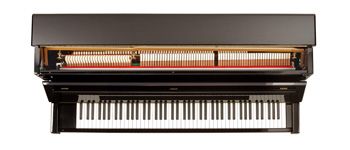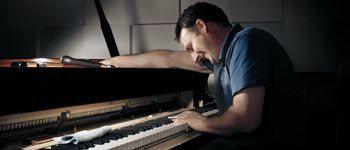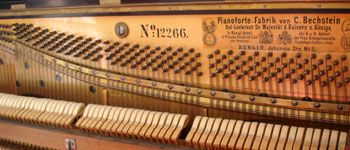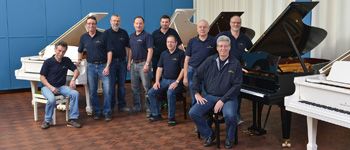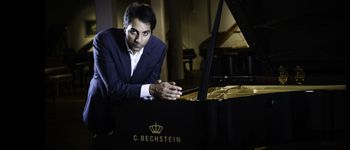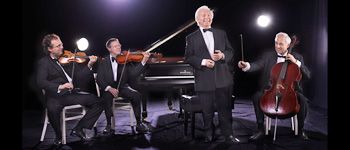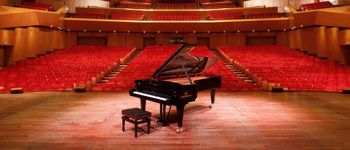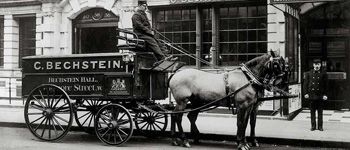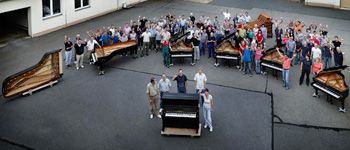Making a C. Bechstein grand piano
Why is the sound of a C. Bechstein grand so fantastic? Discover some secrets of the great art of piano-making at C. Bechstein.
Pianos with a legendary sound
The C. Bechstein pianos have a legendary and incomparable sound, warm, colorful, lyrical, singing, clear and pure. They set no limits on your musical creativity and are perfect for both solo performances and chamber musical recitals.
The typical clarity and purity of the C. Bechstein sound provide your interpretation with a distinctive, vivid dimension.
Sound projection
Whether in a pianissimo cantilena or a powerful fortissimo, the C. Bechstein sound radiates majestically and reflects exactly your artistic intention and your sparkling attack.
The C. Bechstein concert grand pianos are powerful instruments that boast a stunning dynamism and assertiveness.
Where does such excellence come from?
C. Bechstein’s incomparable sound spectrum is the result of a comprehensive piano-making philosophy. In all production steps, the years of experience and in-depth knowledge of our piano-makers and specialists make sure that nothing is left to chance. Discover the mysterious world and the great art of the C. Bechstein approach to piano-making.
Soundboard
The soul of every piano, the soundboard is made of carefully selected tonewood: mountain spruce grown slowly at altitudes of more than one thousand meters, boasting very narrow annual rings. The wood undergoes a strict quality check and is subsequently dried, first traditionally in the open air and then in a long-term climatic chamber. Once it is shaped, the soundboard is provided with ribs with tapered ends in order to generate a perfectly controlled tension. Moreover, the edge of the soundboard is also slightly tapered to further improve the vibration properties.
Soundboard ribs
The ribs of the soundboard are also made of mountain spruce. They compensate the tension of the strings and contribute to transfer their vibrations — via the bridge — to the entire surface of the board. The tapered ends of the ribs fit perfectly in the notches milled into the board’s frame (see below). Once glued onto the soundboard, the ribs generate a perfectly controlled tension that optimizes the board’s vibrations. The traditional C. Bechstein “main rib” improves the soundboard’s elasticity when the bass strings vibrate.
Bridge
The bridge makes the connection between the strings and the ensemble composed of the soundboard and its ribs. Thanks to special manufacturing processes, the C. Bechstein bridge transfers the vibrations of the strings integrally and without attenuation to the soundboard. The bridge of a C. Bechstein grand piano is made of several layers of European maple glued together vertically, the layers being topped by a massive white beech part on which the strings rest. In a Bechstein piano, the bridge is made of massive red beech.
Soundboard frame
The frame of the soundboard is made of massive horizontal mahogany and red beech layers. It forms the periphery of the back frame and its braces and improves the transfer of vibrations. The ensemble composed of the soundboard, its ribs and the bridge rests for a certain amount of time until its crown has stabilized under the effect of carefully controlled tensions. Subsequently, this ensemble is inserted and glued into the frame, which is then adapted so that it supports the board’s crown. This complex procedure also contributes to optimization of the soundboard’s resonance.
Solid case
The case is made of several vertical and horizontal beech layers that are glued together and shaped to achieve optimum solidity. The material is carefully selected to ensure that the case remains highly stable, and perfectly frames the soundboard.
Braces
Massive braces visible on the underside of a grand piano compose the stabilizing back frame. They are made of carefully selected pinewood. On C. Bechstein instruments, the braces are affixed to the frame using dovetail joints and massive wooden dowels. The braces run together at a point on the main rail that is reinforced with an iron part that also supports the cast-iron frame. This particular design complements the energy cycle within the acoustic assembly.
Cast-iron frame
The cast-iron frame decisively contributes to the exquisite sound of a C. Bechstein grand piano. It is cast in a sand mould, a complex and expensive process that delivers better results than vacuum casting technology. The use of special sand guarantees a cast-iron frame with high-precision measurements and an optimum cross-sectional profile.
All C. Bechstein upright and grand pianos have cast-iron frames with high sound propagation velocity. A metal part joins the back and cast-iron frames, thus closing the energy cycle within the acoustic assembly.
Treble resonator
On the C. Bechstein grand pianos of the B, C and D lines, a metallic resonator harmonizes the tension of the cast-iron frame and that of the soundboard frame, enabling precise regulation of the tension of the board below the treble strings.
Acoustic assembly
According to C. Bechstein, the acoustic assembly includes the back frame (the solid “backbone” of the piano, made up of the braces, the rim and the main rail), the strings, the soundboard and the cast-iron frame.
Once they are glued together, the frame and the rim rest and dry for six months to allow the tensions to stabilize slowly. This rest period is observed in the making of all C. Bechstein instruments.
Once the frame, the braces and the main rail are glued together, all these parts are in turn glued into the rim. The soundboard is then fitted with precision into this ensemble and glued to ensure stable positioning.
Tension and durability
The controlled tensions that exist between all parts of the acoustic assembly are intended to maximize the vibration of the soundboard. This contributes decisively to the profound and richly colored sound of every C. Bechstein grand piano. To prevent any loss of the vibration energy within the acoustic assembly, the edge of the C. Bechstein soundboard boasts a special profile, while the notches that receive the ribs are milled using CNC technology to ensure maximum precision. The careful selection of the wood, the various rest periods and the use of state-of-the-art technology ensure that the precise tensions that are generated during the manufacturing process will endure for decades.
Find your Bechstein dealer
Here you find the Bechstein dealers in your area.
